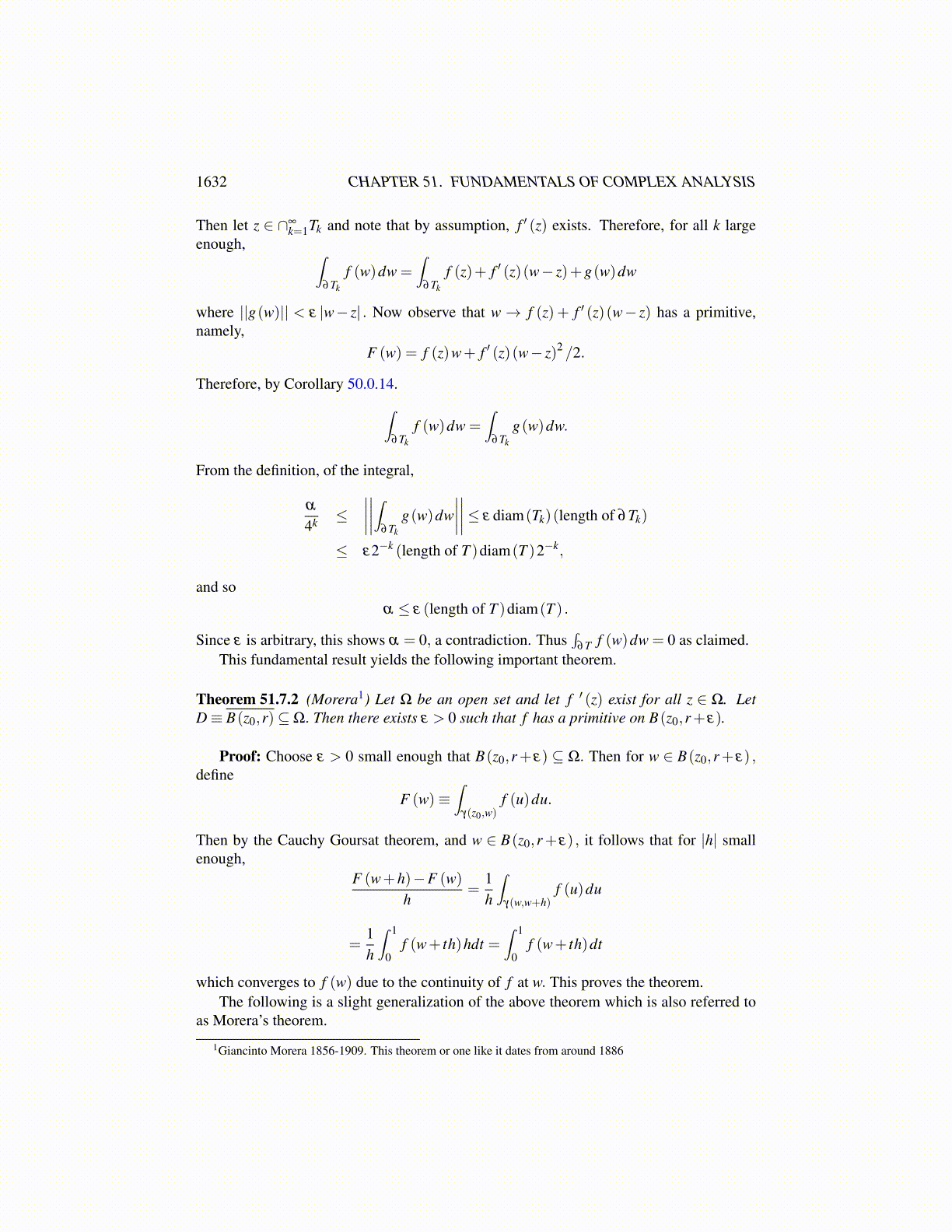
1632 CHAPTER 51. FUNDAMENTALS OF COMPLEX ANALYSIS
where C is some constant depending on the assumed bound on f . Since R is arbitrary,let R→ ∞ to obtain f ′ (z) = 0 for any z ∈ C. It follows from this that f is constant forif z j j = 1,2 are two complex numbers, let h(t) = f (z1 + t (z2− z1)) for t ∈ [0,1] . Thenh′ (t) = f ′ (z1 + t (z2− z1))(z2− z1) = 0. By Lemmas 51.3.2 - 51.3.4 h is a constant on [0,1]which implies f (z1) = f (z2) .
With Liouville’s theorem it becomes possible to give an easy proof of the fundamentaltheorem of algebra. It is ironic that all the best proofs of this theorem in algebra come fromthe subjects of analysis or topology. Out of all the proofs that have been given of this veryimportant theorem, the following one based on Liouville’s theorem is the easiest.
Theorem 51.6.3 (Fundamental theorem of Algebra) Let
p(z) = zn +an−1zn−1 + · · ·+a1z+a0
be a polynomial where n ≥ 1 and each coefficient is a complex number. Then there existsz0 ∈ C such that p(z0) = 0.
Proof: Suppose not. Then p(z)−1 is an entire function. Also
|p(z)| ≥ |z|n−(|an−1| |z|n−1 + · · ·+ |a1| |z|+ |a0|
)and so lim|z|→∞ |p(z)| = ∞ which implies lim|z|→∞
∣∣∣p(z)−1∣∣∣ = 0. It follows that, since
p(z)−1 is bounded for z in any bounded set, we must have that p(z)−1 is a bounded entirefunction. But then it must be constant. However since p(z)−1→ 0 as |z| →∞, this constantcan only be 0. However, 1
p(z) is never equal to zero. This proves the theorem.
51.7 The General Cauchy Integral Formula51.7.1 The Cauchy Goursat TheoremThis section gives a fundamental theorem which is essential to the development whichfollows and is closely related to the question of when a function has a primitive. First ofall, if you have two points in C, z1 and z2, you can consider γ (t) ≡ z1 + t (z2− z1) fort ∈ [0,1] to obtain a continuous bounded variation curve from z1 to z2. More generally, ifz1, · · · ,zm are points in C you can obtain a continuous bounded variation curve from z1 tozm which consists of first going from z1 to z2 and then from z2 to z3 and so on, till in the endone goes from zm−1 to zm. We denote this piecewise linear curve as γ (z1, · · · ,zm) . Now letT be a triangle with vertices z1,z2 and z3 encountered in the counter clockwise direction asshown.
z1 z2
z3